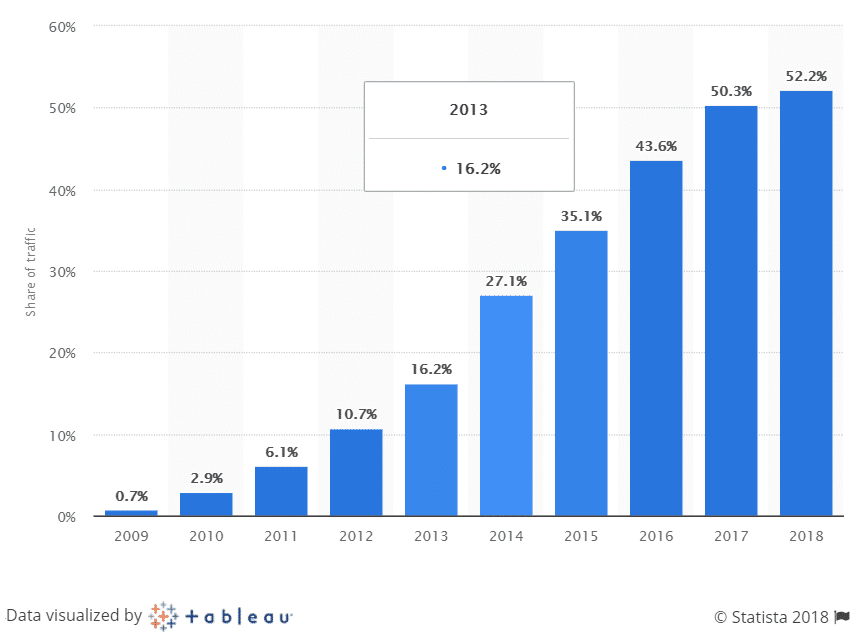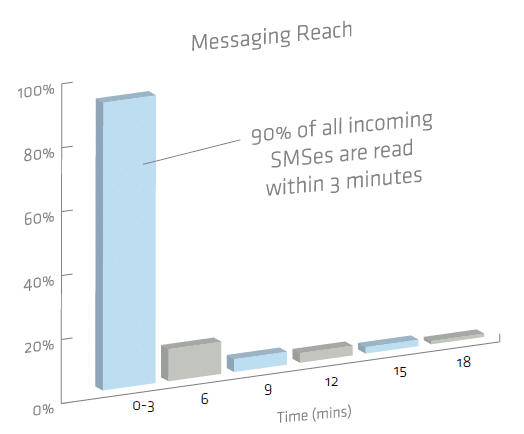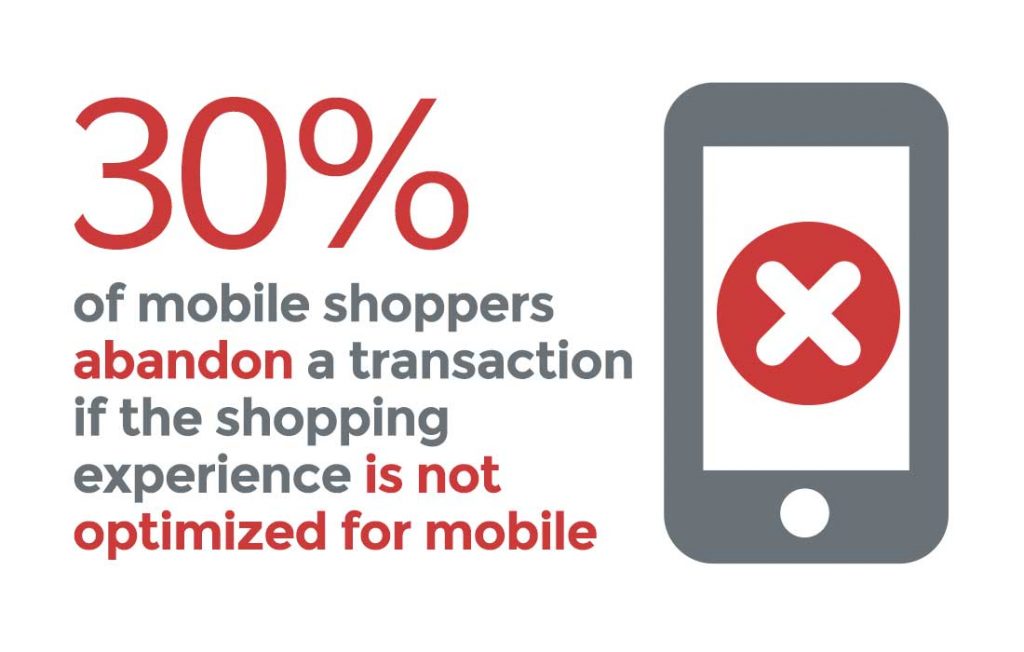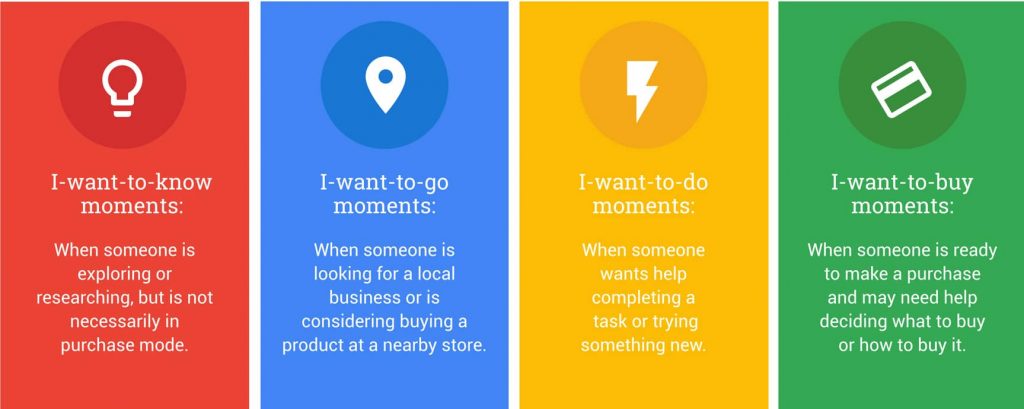Mobile marketing is never an option, it’s a really important aspect of online marketing any online business person should embrace.
There’s no question that marketing to mobile users is now a necessary part of doing business online.
But which principal question is, which mobile marketing strategies should you emphasize?
Beyond just having a fully mobile-optimised website or app, which tactics are most suitable to increase user experience, while also growing sales?
We have included mobile marketing in our digital marketing training course, making sure that you stay up to date with all the various mobile marketing strategies to connect with your customers.
Click here to learn more about our digital marketing course or use the link => https://digitalmarketingskill.com/digital-marketing-training-course/
In today’s article, we’ll take an in-depth look at some of the most productive mobile marketing strategies, definition and more for driving engagement and conversions.
What is Mobile Marketing?
Searchmobilecomputing techtarget definition:
Mobile marketing is promotional activity designed for delivery to cell phones, smartphones and other handheld devices, usually as a component of a multi-channel campaign.
Mobile marketing encompasses all those activities which connect advertisers to consumers through mobile devices and networks. Mobile devices include phones, PDAs, media devices, portable gaming consoles, tablet computers—and, of course, those devices which function as all of the above. Some mobile devices may only be open to a few advertising channels (for example, a basic cell phone can receive text messages); while other devices support many additional possibilities, including mobile Internet access, video messaging, and the ability to actively initiate and interact with advertising (for example, by scanning a QR code).
Mobile marketing is marketing that takes place via mobile devices such as smartphones, tablets or PDAs. It makes use of features of modern mobile technology such as location services to tailor marketing campaigns based on a customer’s location or frequently visited places. Mobile marketing is a way in which technology can promote personalized goods or services to a user who is constantly connected to a network via their mobile device.
Mobile Ready Websites
Get 50% Discount to Master ALL Aspects of Digital Marketing That Can Earn You $2,500 - $5,000 a month (Even if you are a complete beginner!)
Our students that intentionally implement what they learn from our digital marketing course make back the entire course fee within a single month or more after completing our course because our course gives them many income generating options with unlimited earning potential with no age or location barrier. The best part is no technical skills are required.
An opportunity to change your lifestyle and make money working from anywhere in the world. The results our students get from our digital marketing course prove this could be applied to any market or country and that it is designed for any skill level and work background.
*By signing up, you agree to our privacy policy and terms of service.
What does it mean to have a mobile ready website?
This statistic presents the share of mobile phone website traffic worldwide.

In 2018, 52.2 percent of all website traffic worldwide was generated through mobile phones, up from 50.3 percent in the previous year.
Seeing the stats above, a mobile-friendly website is no longer an option — In fact, it’s a must.
Truth is mobile traffic will continue to grow and if your website isn’t mobile ready yet, then be ready to be stuck in time.
When I say your website must be mobile ready, what I meant was…
Your website has to be responsive and fast altogether. Without leaving out a good user experience when they visit.
The rise in mobile traffic coupled with Google’s mobile-friendliness ranking factor means a brand’s site must adapt to mobile devices to stay competitive.
For search engines, “mobile-friendliness” means that:
- The content fits on the screen without side-to-side scrolling or zooming.
- Content loads quickly.
- The website delivers no mobile-specific errors.
Google has even provided a free mobile-friendly tool to help marketers choose the best template/framework for their websites.
The most important reason to maintain a mobile-friendly site is to create a consistent and engaging user experience.
Mobile UX has a dramatic effect on every stage of the buying cycle:
- 64% of mobile web users abandon pages if they don’t load within 10 seconds.
- 35% of executives could not make an intended purchase because the website they visited wasn’t mobile-friendly.
- 90% of the C-suite uses mobile devices to research business purchases.
Making sure your mobile user experience is as easy and seamless as possible should be a primary marketing goal.
How Does Mobile Marketing Work?
Mobile marketing works similarly to other marketing strategies.
The only major difference is, your customer use their mobile to find and reach your business.
In a nutshell, you can target, connect and communicate with them through their mobile devices.
Right now, smartphones, tablets, smartwatches and game consoles are the emerging devices that people use to connect to the internet.
80% of internet users in the world use smartphones.
Why Is Mobile Marketing A Must Do? (Benefits)
The benefits of integrating mobile into your marketing cannot be challenged.
Mobile marketing is important today because of certain reasons.
Let’s explore some of the reasons why you should start optimising your business to reach out to mobile traffic/audience.
1. Audience Reach

When we talk about reach, there is no better way to engage with customers than a mobile phone.
79% of smartphone users reported that their phone is the first thing they check in the morning, and they keep their phone near them throughout the day.
According to the latest report from IDC Research, which examined the habits of smartphone users, 79% of adult smartphone users have their phones with them for 22 hours a day.
When it comes to the number of time users spend on their phones, the survey found that adults are now spending an average of 87 minutes communicating and using social media on their phones Monday through Thursday, and more than 160 minutes Friday through Sunday.
There couldn’t be any other easier way to reach your consumers.
You can reach them anywhere, anytime, as long as you have a solid mobile marketing strategy in place.
Mobile marketing reaches where other marketing channels simply don’t.
2. Personal (High level of personalisation)
A mobile phone is a personal device.
According to this post on Forbes, 91 percent of adults keep their smartphones within arm’s reach.
When you connect with your consumers through mobile, your brand is put in the same category as the friends and family of the user.
People connect better with brands that establish a one-on-one connection with them.
And there’s nothing better than a mobile phone to build this personal connection.
3. Instant Messaging (Quick replies)
If you have to send a message instantly to your customers, what medium would you choose?
Research shows that 90% of text messages are read in less than three minutes, while in another study it was shown that text messages have a 98% open rate.

Mobile marketing doesn’t just have enormous reach but it delivers the message instantly.
Unlike email marketing where the response rate is just 6%, text messages have an exceptional response rate of 45%.
Text messages are delivered instantly, are read instantly, and produce staggering results for brands.
4. Mobile e-Commerce is Growing Rapidly
Did you know that 80% of shoppers used a mobile phone inside of a physical store to either look up product reviews, compare prices or find alternative store locations?
Most shoppers prefer buying from their mobile devices.
And that’s why more than 44% of time spent on the internet is on mobile phones.
As much as 78% of mobile phone searches resulted in a purchase.
Mobile commerce is quickly growing and is projected to dominate e-commerce in the future. There is no excuse for businesses to still ignore mobile marketing. Or what do you think?
5. Cost-effective Marketing
Mobile marketing is extremely cost-effective as compared to other marketing techniques.
For instance, running an ad on TV is way more expensive than running a Facebook ad, SMS campaign or creating a mobile-optimised website.
6. Mobile Marketing Increases Customer Engagement
Your customers will trust you better if they have a good experience with your brand on their mobile phones.
Research shows that 61% of people develop a positive opinion of brands when they do not face any issues visiting the website from their mobile phones.
While 30% of customers will leave your website if it isn’t optimised for mobile.

A mobile optimised website using the right mobile marketing strategies will not just increase sales…
But you will have a pool of happy satisfied customers who will stick to your brand for years to come.
Here are some mobile marketing strategies you should see.
Mobile Marketing Strategies
1. Optimize for micro-moments

Increasingly, we’re seeing users turn to their mobile devices for quick, in-the-moment advice, help or information.
Instead of sitting down to research a topic or issue in depth, they’re more likely to take immediate action and to expect instantaneous answers.
For example:
A person who conducts a query like, “How much Ibuprofen to give a 12-year-old” clearly wants one accurate, bite-sized piece of information in that moment.
They don’t want videos, graphs, charts or an in-depth comparison of various painkillers.
Google GOOGL -5.28% has termed these kinds of search queries “micro-moments”.
They have identified four types of important micro-moments that business owners should be aware of:
- I-want-to-know moments: e.g., “What is the capital of Abuja?”
- I-want-to-go moments: e.g., “Where is the nearest cinema?”
- I-want-to-do moments: e.g., “How do I cook a Nigerian jollof rice?”
- I-want-to-buy moments: e.g., “Samsung Galaxy S9+”
41% of the time, Google will display a featured snippet when the search query contains a question.”
To optimize for these moments, business owners need to anticipate ahead of time what their customers are likely to need, and then create content that perfectly fulfils those queries.
That content then needs to be available instantly, in bite-sized pieces – so mobile users can easily find and use it while on the go.
2. Adopt AI (Artificial Intelligence)

Artificial intelligence has the potential to help marketers customise the customers’ experience at an entirely new level.
In 2015, the Tractica project predicted a virtual digital assistant will be on more than 3.3 billion devices by 2020.
One of the emerging mobile technology trends you can explore is artificial intelligence (AI).
Considered the next big thing in mobile marketing, AI has started to create new marketing opportunities for various brands.
The potential applications for AI are hugely diverse, and innovative businesses are taking advantage of this.
E-commerce brands like Amazon are using AI to predict buying behaviour. Even website builders like Bookmark are using AI to determine optimal web design. The possibilities are endless!
The digital marketing industry is optimistic about AI’s potential.
In a recent Demandbase survey conducted among 500 B2B marketing executives, 80% said AI would revolutionize marketing by 2020.
However, only 10% of the marketers surveyed use AI and only 26% fully understand how to integrate and implement AI into their marketing campaigns.
Want to adopt AI for mobile marketing but not sure how to go about it? Take your cue from the five AI trends currently used by successful brands today.
3. Use hyperlocal marketing to connect at the city and neighbourhood level

More than ever before, consumers are turning to their smartphones for location-specific information.
And I’m not just talking citywide information – I’m also talking hyperlocal based on very small, specific geographical locations (like neighbourhoods or even specific streets).
Here are some ways you can use hyperlocal marketing:
- Get your mobile site or app ranking for location-based keywords (don’t forget to optimise for street and neighbourhood names, not just cities)
- Get listed in local directories and review sites (like Google My Business and Yelp)
- Use hyperlocal advertising to geographically target your ads to mobile users in your area
- Contribute to local publications (e.g., community newsletters, local newspapers, etc.)
- Work on getting mentions, links and reviews on local blogs
Hyperlocal marketing can not only help boost local sales, it can help you build your brand’s reputation in your community.
As local users see your content, listings and ads, they’ll become more familiar with your brand, leading to increased local brand recognition, trust, and sales.
4. Start Live Streaming

The possibilities for incorporating livestreams as part of a wider campaign are huge.
We can’t lie that video is not part of the growing mobile marketing.
In fact, in 2021, videos will account for 78% of the world s data traffic.
That’s is why live video is key. And should be used to reach out to your target audience using the various social media platforms.
Facebook reports that users spend more than 3x more time watching a live video vs. static content.
So you should start using live streaming as part of your next social strategy.
5. Use SMS marketing to connect with users on the fly

There is huge potential when it comes to SMS marketing.
Consider these stats: According to Venture Beat, the open rate for text-based promotions is 98%. Compare this to around 20% for traditional email campaigns.
According to SlickText, the average click-through rate (CTR) for text marketing messages is 36% – compared to email’s 6-7%.
And research suggests the use of mobile coupons is only going to grow over the next few years. According to Juniper Research, there will be approximately 1.05 billion mobile coupon users.
But while the opportunity is huge, many business owners are unsure how to use SMS and MMS (multimedia messaging service) to capture the attention of their subscribers.
The following are four ways to use SMS marketing effectively.
- Offer a valuable incentive for signing up: Many people are understandably reluctant to hand over their phone numbers. Offering a significant discount can be enough to quell this reluctance.
- Publicize sales and events: Send bite-sized announcements for product launches or other promotions.
- Send appointment reminders for service-based businesses: Increase appointment show rates by sending timely reminders.
- Customer surveys (the shorter the better!):g., “We want to know how we did! Reply and let us know.”
6. Mobile Video Advertising
Mobile video advertising involves creating engaging short-form videos that businesses can use to capture the attention of their target audience and deliver their message effectively.
These ads can be displayed within mobile apps, social media platforms, or on mobile websites, allowing for precise targeting and measurable results.
Mobile video advertising offers the advantage of being highly interactive and shareable, making it an effective way to build brand awareness, drive website traffic, and ultimately, increase conversions.
7. Location-Based Marketing
Location-based marketing leverages the user’s geographic location to deliver personalized and relevant content.
This is a situation where you travel to another location and the ads that show on your mobile are tailored to your current location.
You can make use of GPS, Wi-Fi, or Bluetooth technology to target consumers with location-specific offers, promotions, or information as they move through the physical world.
This approach allows for highly targeted and contextual marketing, enabling businesses to reach their audience at the right place and time.
8. Mobile Influencer Marketing
Influencer marketing has emerged as a powerful tool when it comes to mobile marketing strategies.
With the rise of social media and content creators on platforms like Instagram, TikTok, and YouTube, businesses can leverage the influence and reach of these popular personalities.
Mobile influencer marketing involves collaborating with influencers who have a strong presence on mobile apps and a dedicated following within your target audience.
This can involve sponsored content, product placements, or endorsements from influencers, allowing businesses to tap into their engaged communities and benefit from the trust and credibility they hold.
By aligning with the right influencers, businesses can effectively promote their products or services to a highly relevant and receptive audience through mobile channels.
Conclusion
Mobile marketing allows you to connect with your customers and prospective customers at any point in time anywhere.
And with sky-high open and click-through rates, your efforts are more likely to have direct, positive results.
Mobile marketing allows you to directly participate in your customers’ journey.
By being present for their micro-moments, streamlining their mobile experience, integrating live videos, artificial intelligence (AI) and providing timely communications via SMS, mobile marketing should be a key part of every business’s marketing strategy.
Which mobile marketing strategy have you tried out?
Or perhaps, which other mobile marketing strategies have you been using? You can share with us by simply dropping us an email!
We have included mobile marketing in our digital marketing training course, making sure that you stay up to date with all the various mobile marketing strategies to connect with your customers.
Click here to learn more about our digital marketing course or use the link => https://digitalmarketingskill.com/digital-marketing-training-course/
FAQs
What are the disadvantages of mobile marketing?
Some potential disadvantages of mobile marketing include:
- Limited screen space: The smaller screens of mobile devices can make it challenging to display content and ads effectively.
- Privacy and data concerns: Consumers may be wary of sharing personal information and location data required for some mobile marketing tactics.
- Potential for interruption: Poorly timed or irrelevant mobile messages can be seen as intrusive and disruptive by consumers.
- Increased competition: As mobile usage grows, the mobile marketing space is becoming more crowded, making it harder to stand out.
Why is mobile marketing so effective?
Mobile marketing is highly effective for several reasons:
- Ubiquity of mobile devices: Smartphones and tablets have become an integral part of consumers’ daily lives, making mobile an essential channel for reaching and engaging them.
- Personalization and targeting: Mobile marketing allows for precise targeting and personalization based on user location, behavior, and preferences.
- Immediate engagement: Mobile devices enable real-time, interactive experiences that can drive immediate action, such as click-to-call, app downloads, or in-store visits.
- Measurability: Mobile marketing provides detailed data and analytics on campaign performance, allowing for continuous optimization.
- Cost-effectiveness: Compared to traditional advertising, mobile marketing can be a more cost-effective way to reach and engage customers.
What is mobile marketing vs digital marketing?
Mobile marketing is a specific component of digital marketing that focuses on reaching and engaging customers through their mobile devices, such as smartphones and tablets. While digital marketing encompasses a broader range of online and electronic channels, mobile marketing tailors strategies and tactics to the unique characteristics and usage patterns of mobile devices.
MORE ARTICLES:
- How To Use WhatsApp For Business Promotion | WhatsApp Marketing Strategy
- 40 Best Content Marketing Tools To Jump-start Your Digital Content
- 6 Effective Online Marketing Strategy To Target Your Audience
- How To Create High-Quality Backlinks To Your Site For Free
- How To Get Customers Online | 15 Ways To Find More Clients For Your Business
- 7 Common SEO Mistakes To Avoid And How To Fix Them
- SEO vs SEM | What Is The Difference Between SEO and SEM?


